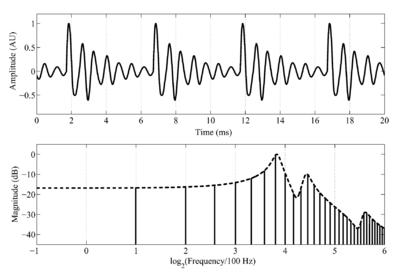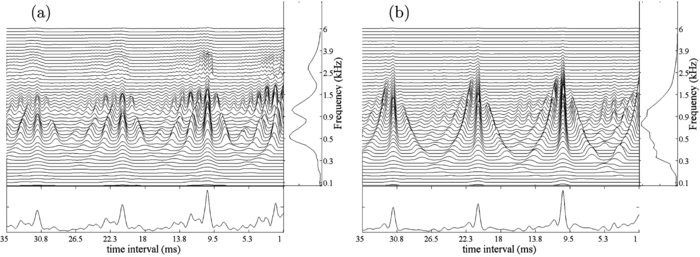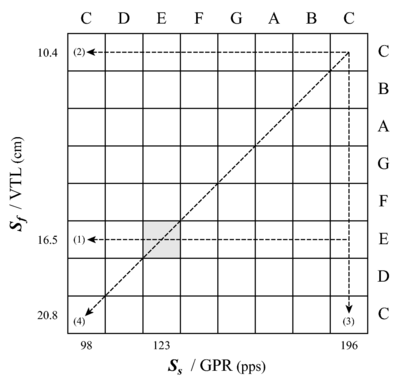SHAR PGW 2010 Demo Sounds
From CNBH Acoustic Scale Wiki
http://www.acousticscale.org/link/SHAR2010Demo and http://www.acousticscale.org/link/SHAR2009Demo both lead to this page. The book came out a little later than planned. The demonstration melodies are below.
Roy Patterson , Etienne Gaudrain, Tom Walters

Figure 1 – The waveform and spectrum of a child's /a/ vowel.

Figure 2 – Sixteen common instruments illustrating four registers within each of four instrument families

Figure 3 – Auditory images of the note G2 as sung by a baritone (a) and as played by a French horn (b).

Figure 4. Musical notation for four short melodies: The black notes represent the acoustic scale of the source, Ss, which we hear as the pitch. The grey notes represent the acoustic scale of the filter, Sf, which affects our perception of the size of the source. The original speaker's voice defines the note E for both dimensions.
Each sound is presented with its equivalent musical notation. The black note-heads describe the pitch, 'i.e.' the acoustic scale of the fine structure Ss. The grey note-heads describe the acoustic scale of the envelope Sf.
Melody 1
|
Melody 2
|
Melody 3
|
Melody 4
|

Figure 5. The Ss − Sf plane, or GPR-VTL plane. The abscissa is the acoustic scale of the source (Ss), or the GPR, increasing from left to right over an octave. The ordinate is the acoustic scale of the filter (Sf), or the VTL, doubling from top to bottom. The plane is partitioned in squares that represent the musical intervals. The square associated with the original speaker is highlighted in grey. The dashed lines show the progression of the notes in the melodies.




